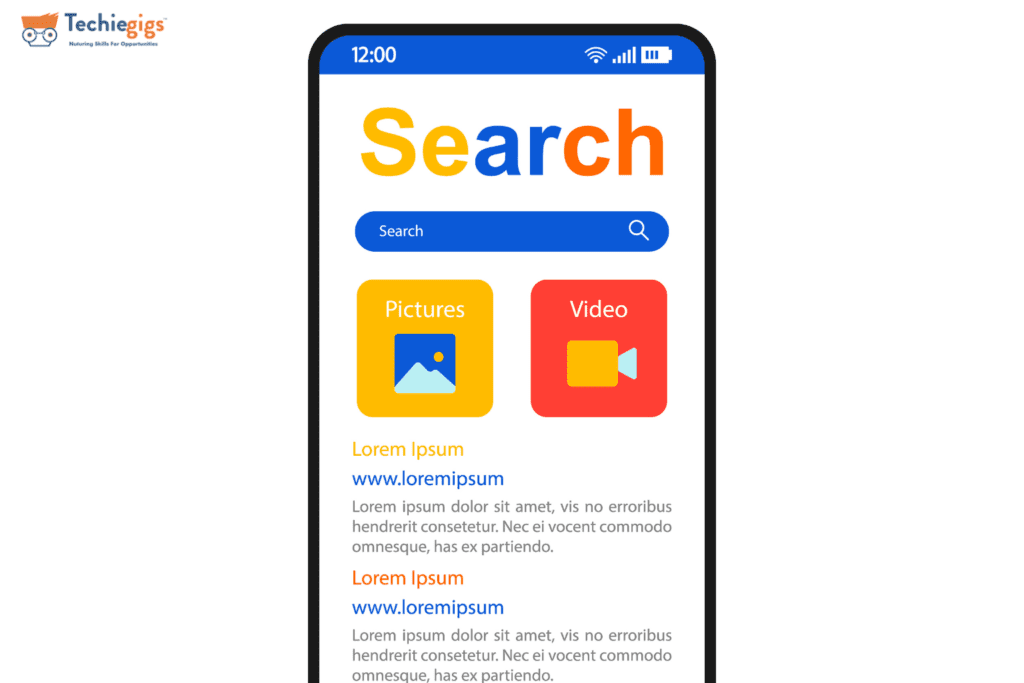Maximizing Google Discover: Strategies for Content Optimization
As a seasoned search engine optimization specialist, you’re well aware of the pivotal role content plays in catering to user intent. But what happens when users need clarification about the information they’re seeking? In 2018, Google introduced a solution with the launch of Google Discover. Formerly known as Google Feed, this feature capitalizes on user data to curate a personalized content feed that proactively serves relevant information, setting the stage for a new realm of content discovery.
Designed exclusively for mobile devices, Google Discover transcends mere query-based responses. It employs predictive algorithms to anticipate user behaviours and deliver content that aligns with users’ potential interests. This innovation unlocks a powerful avenue for driving web traffic by analyzing user interactions. The range of content displayed on Google Discover is diverse, encompassing news, articles, videos, ads, and special rich results such as live sports scores. It takes centre stage on Google’s homepage, adapting its offerings to suit each user. With the continuous evolution of machine learning and artificial intelligence, the prevalence and accuracy of this content discovery method are poised to escalate. This comprehensive article delves deep into this technology and provides strategies for harnessing its potential.

Table of Content
How Google Discover Operates:
Google deems content suitable for Discover once it’s been indexed and confirmed to comply with content policies. Much like the AI-powered video recommendations on platforms such as TikTok and Facebook, Google Discover leverages an algorithm to craft a customized feed. It draws insights from user data, steering the search engine toward a “searchless query” paradigm, where understanding individual users supersedes comprehending a solitary query. The user emerges as the nucleus of the Discover experience. Google Discover instinctively showcases personalized content driven by factors including:
- Search History
- Browser history
- App activity
- Location (subject to Google account settings and privacy preferences)
Defining Google Discover Interests:
To unravel the intricacies of Google Discover interests, While this sample size is relatively modest, it yielded significant insights. Sports and entertainment-related interests took the lead. While my Discover feed may teem with updates on former Bachelor Peter Weber’s dating life, others might be inundated with the latest sports developments. Hobbies and activities constituted another prominent sphere. Whether one’s passion is baking or beekeeping, Discover ensures content tailored to after-hours pursuits.
Moreover, brands exerted substantial influence. Virtually every submission encompassed specific brands or local businesses. Despite Discover’s intent to introduce fresh content to users, it retains a memory of favoured stores and eateries. SEO enjoyed its dedicated category, underscoring the community’s significance. The diagram below visualizes submitted user interests categorized by sector (e.g., finance, education) and entity type (e.g., brand, product, person).
Engaging with Google Discover:
Users wield the power to personalize their feed through direct feedback mechanisms. This includes following or unfollowing topics, adjusting content visibility (“show more” or “show less”), and even opting out of content from specific publishers. On occasion, Google proactively solicits user input.

Mastering Google Discover Optimization:
Optimizing for Google Discover is a tangible objective. Functioning as a personalized recommendation engine, it provides users with engaging content aligned with their interests and browsing history. The crux of optimization entails crafting top-notch, captivating content tailored to your target audience. Distinct from conventional SEO, which revolves around specific queries, Google Discover hinges on presenting content in sync with user interests sans explicit search inquiries. Here’s a roadmap for enhancing your visibility:
- Craft Compelling, High-Quality Content: The foundation of Discover optimization rests on generating well-researched, informative content that resonates with your audience. Refrain from disseminating misleading or subpar content that might erode trust.
- Implement Structured Data: Augment your articles with structured data to provide clarity to search engines.
- Leverage Trending Topics: Address current trends to amplify your Discover presence.
- Embrace Visual Content: High-quality images and videos enrich content quality. Ensure images are at least 1,200 pixels wide, and consider AMP compatibility.
- Prioritize Page Experience: Uphold a superior user experience by optimizing mobile-friendliness, page load speed, and other key factors.
- Elevate E-A-T Signals: Expertise, Authoritativeness, and Trustworthiness (E-A-T) underscore content quality. Cultivate a track record of credible content to bolster your Discover suitability.
Unraveling the Significance of E-A-T: Expertise, Authoritativeness, Trustworthiness
Google Discover places paramount importance on content that embodies reliability, credibility, and trustworthiness. The components encapsulated in E-A-T—Expertise, Authoritativeness, and Trustworthiness—influence content suitability for recommendations. Remember, Google doesn’t merely promote any content haphazardly. When tailoring content for Google Discover, select topics aligned with your expertise or the skills of your content creators. Contribute valuable and pertinent insights to establish authority within your niche over time—a far more rewarding approach compared to tackling broad topics tangentially linked to your brand or proficiency.

Enhancing E-A-T Factors:
Generate Premium Content:
Craft meticulously researched, accurate, and educational content that adds value to your readers’ experience. Shun sensationalism, misinformation, and substandard content that can erode trust.
Regularly Update Content:
Provide clear publication dates, refresh outdated content, and annotate updates as needed.
Showcase Expertise:
Spotlight your authors’ credentials, experience, and qualifications to demonstrate expertise. Incorporate author bios, professional backgrounds, certifications, and industry recognition.
Harness Structured Data:
Leverage Article and Author markup to offer structured information to search engines.
Cultivate a Reputable Track Record:
To establish credibility within your niche, sustain a consistent stream of high-quality, pertinent content.
Prioritize Transparency:
Attribute sources, cite credible references, and maintain transparency regarding editorial practices, fact-checking, quality assurance, and affiliations.
Enhance Website Experience:
Prioritize user-friendly experiences by optimizing mobile responsiveness, page load speed, HTTPS security, and overall website design.
By implementing these tactics, you’ll fortify E-A-T signals, dispense valuable content, and create an environment of trust and credibility—boosting your prospects of being recommended on Google Discover.

Decoding Google Discover’s Dimensions:
While Google Discover gravitates towards fresh content, its spectrum isn’t confined to news. Though news articles constitute a significant portion, there’s more to Discover’s repertoire.
An insightful analysis of over 11,000 URLs across 62 domains over a year yielded intriguing findings. While news sites claimed 46% of URLs, they garnered 99% of Discover clicks. Notwithstanding, non-news sites also reaped benefits.
Blogging Triumphs Across Industries:
Non-news sites’ remaining 1% of clicks—surpassing a million over 12 months—were allocated to diverse content types. Notably, blog posts emerged as a potent content form.
Discover’s Temporal Realm:
Aligned with Discover’s quest for fresh content, most URLs in the study enjoyed traffic for three to four days, with the pinnacle of activity occurring one to two days post-publication. However, evergreen content demonstrated the potential to extend traffic longevity.
User Engagement in Focus
The standout feature of Google Discover is its impressive click-through rate (CTR) of 11% across all analyzed pages. When excluding news sites—predominant in the dataset—the average CTR hovered at 6%, surpassing traditional search CTRs.
Unveiling User Engagement Strategies on Google Discover
In traditional search, queries act as the bridge between user needs and relevant content. Conversely, Google Discover places content before users realize their needs, driven by the alignment between content and user interests. Although lacking in conventional keyword research and query-centric strategies, there are ways to enhance Discover visibility.
Embrace Mobile Optimization:
Given Google Discover’s mobile exclusivity, optimizing mobile-friendliness is paramount. Regularly assess mobile usability through Google Search Console’s Mobile Usability Report, rectifying any identified issues promptly.
Foster Entity-Based Content:
Interests span entities—objects, concepts, or brands. Utilize tools like Entity Explorer to discern relationships between your brand and various entities, fostering deeper connections with users.
Tap into Trends:
Google Discover thrives on trends by mirroring social media feeds. Monitor trending events and themes, optimizing your content and social sharing buttons for maximum impact.
Curate Relevant, Valuable, and Engaging Content:
Liberated from search volume constraints, tailor content for user interests. Identifying intersections between topics (e.g., “best ski resorts near Kashmir,” “winter running tips”) enhances personalization. Exploit current events for added resonance.

Craft Captivating Page Titles:
Crafting descriptive page titles that encapsulate content essence without using clickbait tactics optimizes content visibility.
Harness the Power of Visuals:
Visual content wields significant influence. Capitalize on high-quality images—ideally, those over 1,200 pixels wide—and adhere to max-image-preview: large settings or AMP compatibility.
Reevaluate Video Strategy:
Videos hold sway on Google Discover, complementing Google’s visual shift. Although constituting 17% of the content in this study (excluding YouTube data), videos’ significance is underscored by YouTube’s broader presence. Engage users through compelling videos and optimize your YouTube channel for enhanced Discover and traditional search visibility.
Shun Sensationalism:
Google Discover’s commitment to delivering reliable, relevant information manifests in penalizing content featuring exaggerated or misleading elements.
Leverage the following Features:
Empower users to track updates by leveraging the Follow feature. Ensure your <head> section guides Google in determining the relevant feed for followers.
Monitor Performance:
Gauge Discover content performance via the Performance Report for Discover. This report furnishes insights into impressions, clicks, and click-through rates for content featured on Discover within the past 16 months.
Conclusion
Google Discover presents an unmissable opportunity for SEO professionals. It dovetails seamlessly with existing strategies, necessitating high-quality, audience-focused content and a mobile-responsive website. While a continual process, Discover optimization reaps dividends in terms of visibility, traffic, and conversions.

